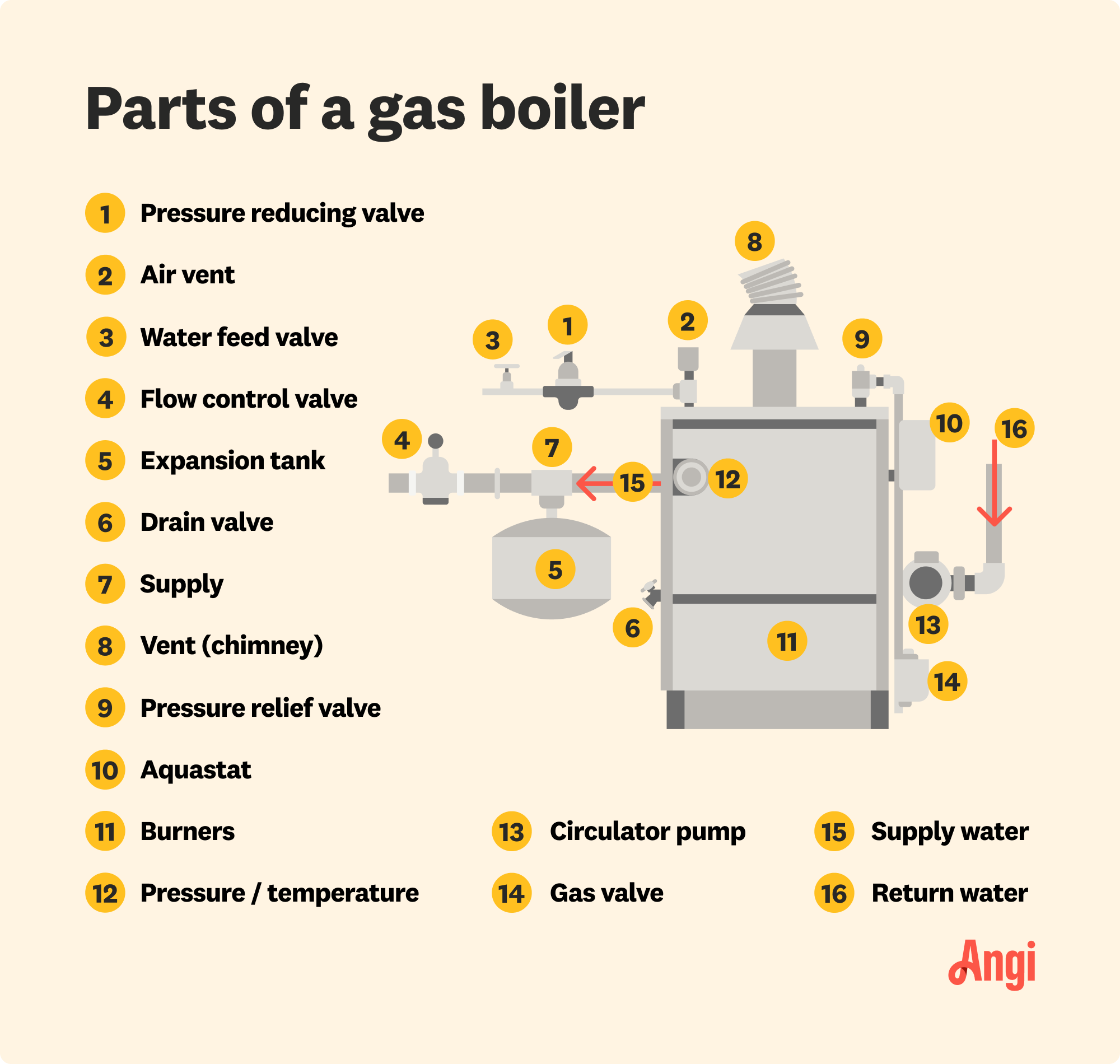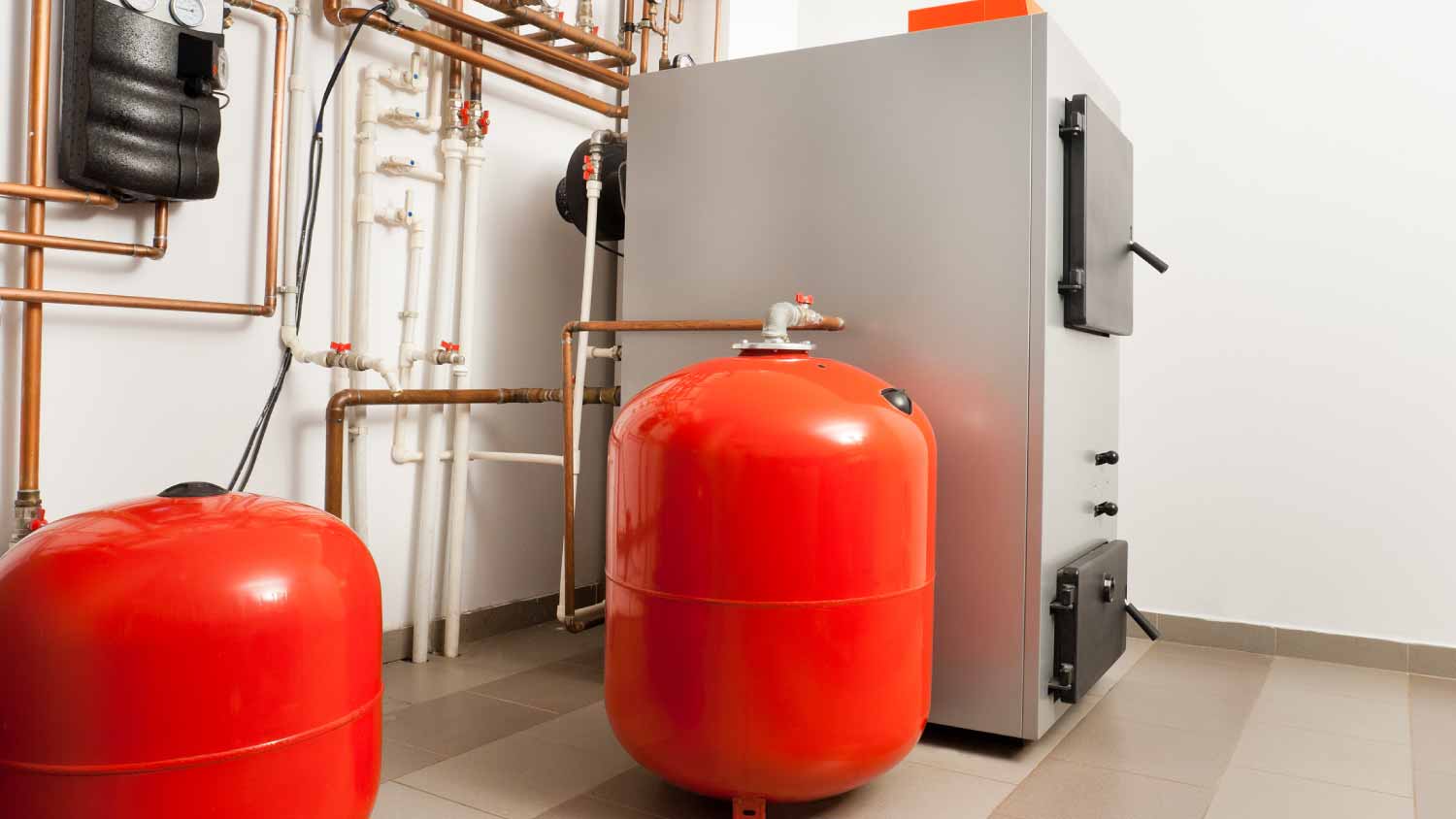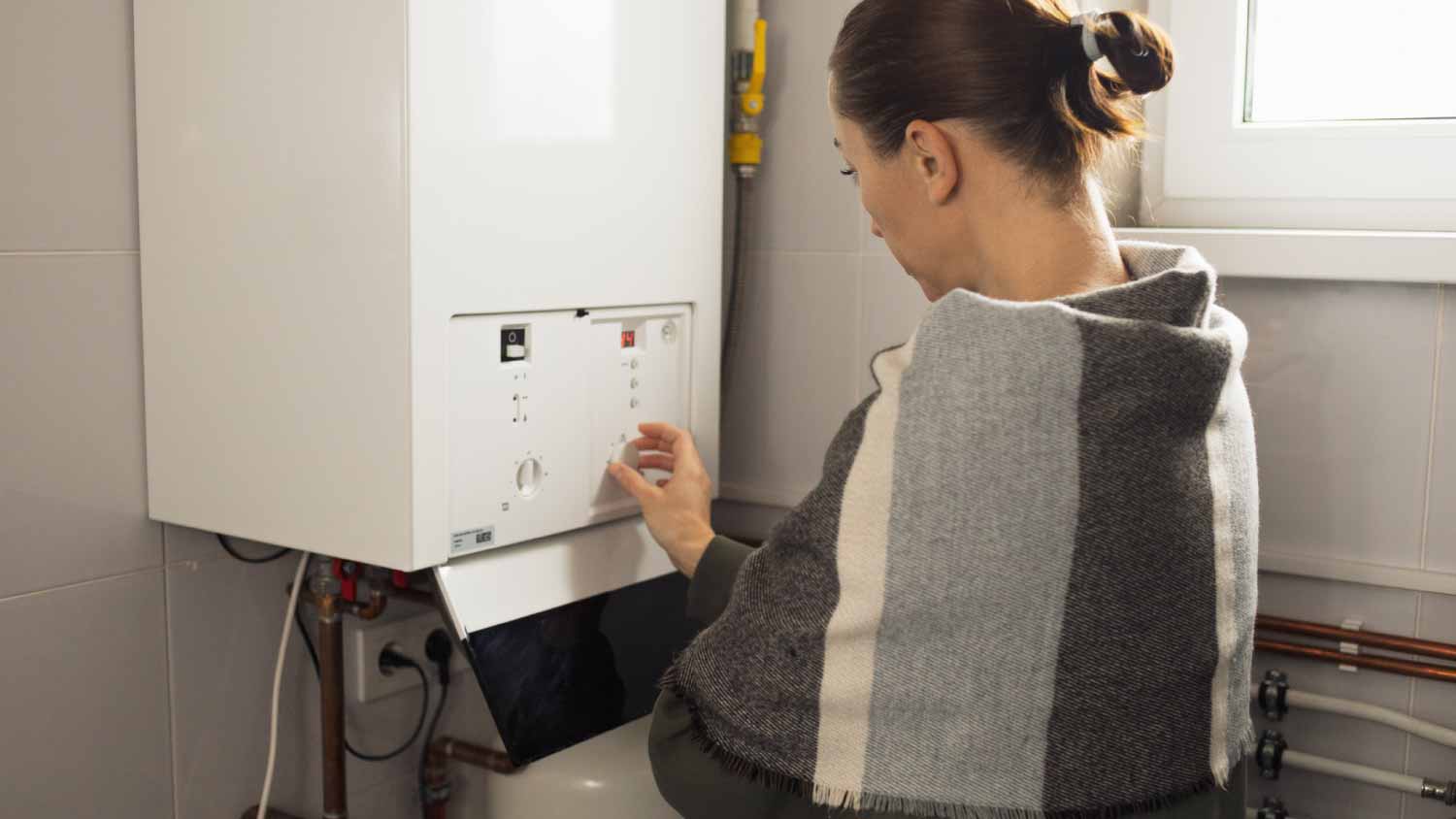
Running out of hot water too quickly or hearing strange noises when you call for hot water? Use this water heater repair cost guide to see what a fix will cost.
Expanding on a common boiler question


Expansion tanks must be installed on the supply side of the boiler—where cooler water enters the boiler to be heated again.
Expansion tanks must be installed between the boiler and the circulator, and they must be 18 inches or more away from the boiler’s vent connector.
Most expansion tanks work properly when standing upright, but some models allow for a horizontal installation.
Signs of a poorly installed expansion tank include rapid pressure increases, strange new noises, and malfunctioning bleed valves.
Wondering where the expansion tank should be installed on your boiler? The expansion tank, or thermal expansion tank, is a 3 to 5 pound tank that sits close to boilers and water heaters, performing a small but necessary function. Inside is a trapped pocket of air that expands and contracts in response to pressure. When water is heated, it expands, so the tank allows water to expand and pushes back as the water cools, keeping the pressure at safe levels while heating the water to high temperatures.
To do that job properly, the expansion valve needs to be installed in the right spot on the boiler. Let’s dive into the details of where to install an expansion tank and when to hire a boiler professional for help.

The most common spot to install the expansion tank on a boiler is slightly above or close beside the boiler—wherever it’s easiest to strap the tank in next to the supply pipe and secure it for the long term. Here are the rules that the tank placement should follow:
The tank should be installed at least 18 inches from the vent connector of the boiler.
The tank must be installed on the supply side of the boiler, not the “cool” side of the boiler where returning water comes. Supply pipes are usually higher and marked with the direction of water flow.
The tank should usually be installed upright.
The tank must be properly supported with metal straps or brackets. It cannot be attached to the piping and left to hang.
The tank must be installed between the shut-off valve and the tank inlet.
The tank must be installed above the pressure relief valve on the boiler.
If the boiler has a system circulator on the supply side, the expansion tank must be installed between the boiler and the circulator.
Boiler manuals have more specific instructions for installation. Keep in mind that larger boilers may need larger expansion tanks. Consider hiring a local boiler installer to add an expansion tank, ensuring a high-quality and long-lasting placement.

If you’re worried that your expansion tank is in the wrong position, there are several signs that something has gone wrong. Look for these clues, especially if they happen right after an expansion tank installation.
A completely upside-down tank: Some expansion tanks have the option to place them horizontally, but the tank should never be installed upside-down. That prevents the air from condensing properly
Leaks from a new expansion tank: A new leak could indicate an installation on the wrong part of the system or with the wrong connections, especially if it starts leaking immediately when you turn the boiler system on. If multiple leaks suddenly appear after a new tank installation, that could mean the tank is failing to do its job.
Misbehaving faucets: If you turn on your faucets and the water shoots out extra-hard for the first several seconds, then your system is over-pressurized. One cause is a malfunctioning expansion tank that isn’t allowing the proper contraction and expansion of air. This only applies to boilers that also heat water for heating.
Rapid (and dangerous) pressure increases: If heated water doesn’t have any place to push extra air, then it will quickly raise the pressure of the boiler into the danger zone. If you see the pressure gauge showing alarming signs, shut it down and consult a boiler professional.
Malfunctioning bleed or relief valves: Bleed and relief valves normally bleed out excess air from the system. But if these valves immediately leak water without bleeding out air, the expansion tank likely has an issue.
A dull thudding sound: Give the tank a rap with your knuckles when the boiler is turned off. A healthy expansion tank should have a clear, hollow sound, showing that it’s filled with air. If the tank has a dull thud instead, it may be filled with water and not working properly.
Alarming cracking noises: When a boiler system can’t deal with pressure properly, the pipes and pipe joints suffer the most. This can create alarming popping and cracking noises, especially once the boiler is turned off and the pressure on the pipes eases.
From average costs to expert advice, get all the answers you need to get your job done.

Running out of hot water too quickly or hearing strange noises when you call for hot water? Use this water heater repair cost guide to see what a fix will cost.

Looking to replace or upgrade your water heater? Use this water heater replacement cost guide to see what the work will cost and what factors affect your total.

Find out the average tankless water heater repair cost, what impacts pricing, and how to save. Get expert tips to plan your repair budget with confidence.

How long does a gas water heater last? Most last eight to 12 years, though some can last up to 15 years with proper maintenance.

Not sure who fixes tankless water heaters? In most cases, you’ll want to call a plumber.

Is your water heater not heating? Don't put up with cold showers Find out what's going on and how to fix it.